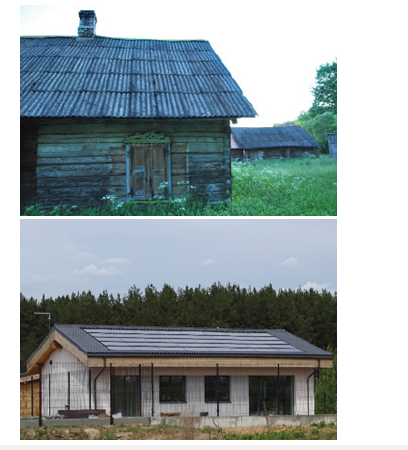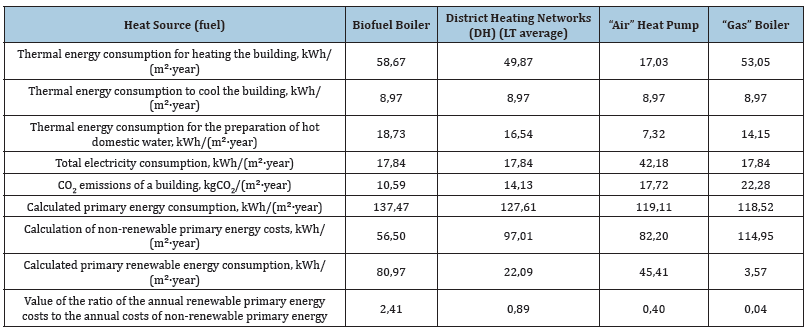- Submissions

Full Text
Advancements in Civil Engineering & Technology
Changes in Building Energy Certification (Lithuania)-Biomass Rehabilitation
Kęstutis Valančius*
Building Energy Department, Vilnius Gediminas Technical University (Vilnius Tech), Lithuania
*Corresponding author: Kestutis Valancius, Building Energy Department, Vilnius Gediminas Technical University (Vilnius Tech), Lithuania
Submission: August 01, 2022;Published: August 08, 2022

ISSN: 2639-0574 Volume5 Issue2
Opinion
In the last few years, the areas of energy regulation, certification and implementation of solutions in Lithuania (LT) have undergone significant, if not drastic, changes in the field of energy regulation, certification and implementation of solutions in Lithuania. From a good decade of “normal”, now defined as energy class C and B homes, we entered the A++ era last year (2021). STR 2.01.02:2016 “Design and certification of the energy performance of buildings” (hereinafter as STR) calls such buildings “Buildings that are almost energy-free”, but the name is misleading, because an energy-free building is uninhabited, “dead”, since all the structures in operation consume energy, the only question is which and from where (Figure 1).
Figure 1:(non-) Energy efficient buildings.

Last year, in preparation for the A++ “era”, “routine” STR changes were made (which is logical and continuous) and the energy certification program NRG6 was updated. It is difficult for an ordinary and not used user to understand the essence and result of all the changes, so the best way is to try it. “Tested” building - Residential buildings (houses) of 1 and 2 apartments, Heated area of the building (its part), m²: 132.45. The energy efficiency class of the building (part of it) is determined: A+, which means that the “standard” parameters of the building: the thermal characteristics of the external barriers, tightness, the efficiency of the mechanical ventilation heat return (recuperator) meet the requirements of the A+ building, only the heat source is changed. The results are presented in the Table 1.
Table 1: Heat source comparison for A++ building.

It comes to the fore that it is still misleading the consumer that the heat pump “reduces” the heat consumption (demand) for heating several times. This is especially true for homeowners who want to change the existing heat pump to an e.g., pellet boiler based on the results of the certificate. However, (!) the authors want to draw attention to the “value of the ratio of ((un)renewable primary energy”, which (in different annexes to the STR is called “part”, “value”) for the A++ building must be >1, which is understood asthe greater part of the (required) primary energy consumption of the building must be renewable. In this way, biofuel (and at the same time, DH with biofuel boiler houses) is “rehabilitated” as a renewable resource, and the heat pump is “driven” through “total electricity consumption”, which (logically) increases significantly since the heat pump is the same electric heating only significantly more efficient than direct heating with electricity.
At the same time, it is clear that having satisfied the “standard” requirements (external barriers, tightness, heat return efficiency, etc.), it is easiest for the A++ energy class to “reach” the building (without additional renewable energy installations) using a local biofuel boiler, as well as by connecting to the “green” heating networks. And using heat pumps as a source of heat and especially coolness (air conditioning) and receiving electricity “from the grid” will not do without additional renewable energy sources (e.g., solar power plants). This is logical and correct.
There is another good news that STR changes and at the same time NRG6 (energy certification software) “allow” the use of remote solar power plants, so it is possible to increase the share of renewable primary energy “without leaving home”. This not only reduces the “headache” for builders (be sure to design and install on the building) but also “unties hands” for architects - the roof is not necessarily pitched and oriented to the south. So, we are moving in the right direction, and no mistake does not work.
© 2022 Kęstutis Valančius. This is an open access article distributed under the terms of the Creative Commons Attribution License , which permits unrestricted use, distribution, and build upon your work non-commercially.
 a Creative Commons Attribution 4.0 International License. Based on a work at www.crimsonpublishers.com.
Best viewed in
a Creative Commons Attribution 4.0 International License. Based on a work at www.crimsonpublishers.com.
Best viewed in 







.jpg)






























 Editorial Board Registrations
Editorial Board Registrations Submit your Article
Submit your Article Refer a Friend
Refer a Friend Advertise With Us
Advertise With Us
.jpg)






.jpg)














.bmp)
.jpg)
.png)
.jpg)










.jpg)






.png)

.png)



.png)






